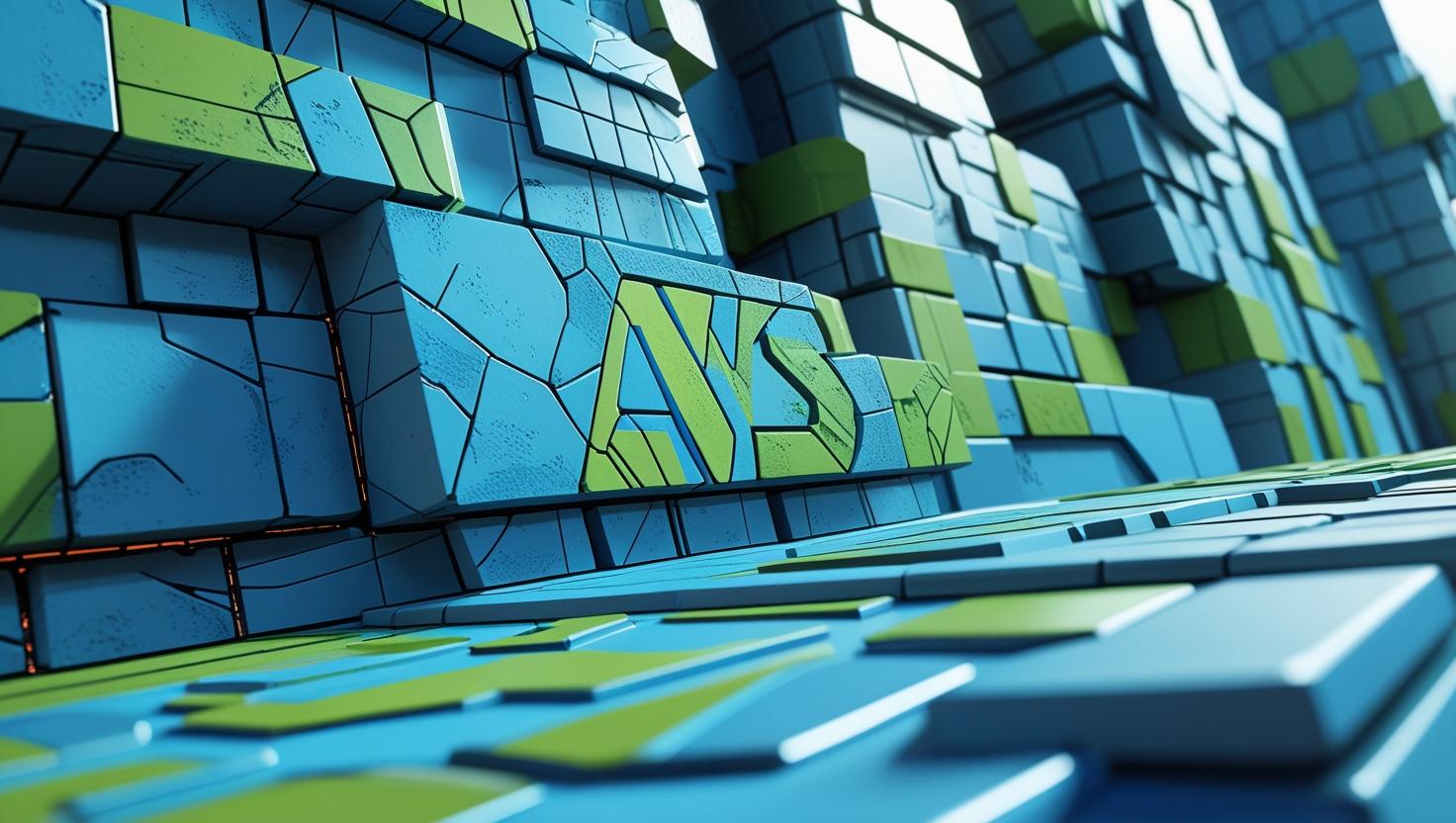In today’s rapidly evolving tech landscape, generative AI is rewriting the rules of software development, customer service, content creation, and more. Amazon Web Services, a dominant player in the cloud ecosystem, launched AWS Bedrock to help organizations harness the power of generative AI—securely and at scale.
So what exactly is AWS Bedrock, how can it be used, and what are its security strengths and limitations? Let’s break it down.
What is AWS Bedrock?
AWS Bedrock is a fully managed service that allows developers to build and scale generative AI applications using foundation models (FMs) from leading AI companies like Anthropic (Claude), AI21 Labs, Meta (Llama), Cohere, Mistral, and Amazon’s own Titan models.
Unlike some AI platforms that require developers to manage infrastructure or fine-tune large models themselves, AWS Bedrock offers a serverless API-based interface to access and integrate these powerful models directly into your applications.
Whether you want to build a chatbot, generate images from text, summarize documents, or automate customer interactions, AWS Bedrock makes it possible—without needing deep machine learning expertise.
How Does AWS Bedrock Work?
At a high level, Bedrock provides:
- Access to Foundation Models (FMs): You can choose from several top-tier models suited for text generation, summarization, classification, search, and more.
- API-Based Integration: Simple API calls let you run inference on models—no need to manage GPUs or deploy models manually.
- Model Customization with RAG and Fine-Tuning:
- RAG (Retrieval-Augmented Generation) allows you to ground model responses in your own data.
- Fine-tuning is supported for certain models, so you can specialize them to your domain.
- Built-in Security and Compliance with AWS’s robust security architecture.
- Serverless Experience: No need to worry about infrastructure. AWS handles it all.
Common Use Cases for AWS Bedrock
AWS Bedrock opens the door to a range of AI-powered solutions, including:
1. Customer Support Automation
Build intelligent chatbots that answer FAQs, process support tickets, or triage customer issues using models like Claude or Amazon Titan.
2. Content Generation
Automatically draft blogs, reports, emails, or marketing copy with AI21 Labs’ Jurassic-2 or Cohere’s command models.
3. Search & Semantic Retrieval
Enable smart search engines that understand user intent and context using Cohere’s embedding models.
4. Data Summarization & Analysis
Automatically summarize lengthy reports, meeting transcripts, or product reviews.
5. Enterprise Knowledge Assistants
Combine RAG with Bedrock to create assistants that query internal documents, databases, or APIs and return trusted answers.
How to Use AWS Bedrock: Step-by-Step
Here’s a basic workflow to get started with AWS Bedrock:
Step 1: Enable Bedrock in Your AWS Account
Not all regions support Bedrock yet. Enable the service via the AWS Management Console and ensure your account has access.
Step 2: Choose Your Foundation Model
Select from models like:
- Claude (Anthropic) for reasoning and dialogue
- Jurassic-2 (AI21 Labs) for natural language tasks
- Titan (Amazon) for text generation or embeddings
- Llama 3 (Meta) for open-source power
Step 3: Use the Playground or API
AWS provides a no-code Bedrock Playground to test models or a Python SDK (Boto3) and REST API for integration.
Example API call using Boto3:
import boto3
client = boto3.client('bedrock-runtime')
response = client.invoke_model(
modelId='anthropic.claude-v2',
body='{"prompt":"Explain quantum computing","max_tokens_to_sample":100}'
)
print(response['body'].read())
Step 4: Add Your Data (Optional)
Use Knowledge Bases or RAG pipelines to enhance responses with your proprietary data.
Step 5: Monitor and Scale
AWS integrates Bedrock with CloudWatch, GuardDuty, and IAM for logging, monitoring, and access control.
Security in AWS Bedrock: Pros and Cons
✅ Security Pros of AWS Bedrock
- Data Privacy and Isolation Your prompts and data are not used to train foundation models. This guarantees data privacy, a key concern for regulated industries like finance or healthcare.
- Granular IAM Access Controls AWS Bedrock integrates seamlessly with Identity and Access Management (IAM), allowing you to:
- Control who can access which models.
- Define least-privilege roles.
- Audit API calls using CloudTrail.
- Encryption at Rest and in Transit All data is encrypted using AES-256 or customer-managed keys (CMKs) via AWS KMS. Communications between services are encrypted using TLS 1.2+.
- Logging and Monitoring You can enable detailed request and response logging to CloudWatch Logs for auditing, anomaly detection, and security investigations.
- PrivateLink and VPC Support Bedrock can be integrated with AWS PrivateLink for private API access, keeping traffic within your VPC.
- Compliance Ready AWS Bedrock inherits the security certifications of AWS, including:
- ISO 27001
- SOC 2 Type II
- HIPAA
- GDPR support
- Model-level Governance You can select only specific models your organization approves for use, helping enforce internal AI governance policies.
❌ Security Cons and Risks of AWS Bedrock
- Model Behavior is a Black Box Even though Bedrock provides model variety, foundation models (especially closed-source ones) can return unexpected or unsafe outputs. There’s no full transparency into how models reason.
- Prompt Injection Attacks If user inputs are not sanitized, attackers can manipulate prompts to trick the model into leaking sensitive info or bypassing restrictions.
- Data Exposure Risks in RAG Pipelines When grounding model responses in your own documents (RAG), improper configuration could expose confidential data to unintended users.
- Lack of Real-Time Content Moderation While Bedrock supports content filtering, it’s not always real-time. You may need additional layers like Amazon Comprehend or Amazon GuardDuty for NLP filtering or security events.
- Costs of Misuse Without tight controls, usage could balloon—both in security exposure and billing. For example, if an endpoint is left exposed or misconfigured, it can be abused for spammy generation tasks.
- Dependency on Third-Party Models Some models in Bedrock come from third parties like Anthropic or AI21. While AWS contracts enforce data policies, users must still trust third-party compliance and safety practices.
Best Practices for Securing AWS Bedrock
To reduce security risks:
- Implement Rate Limiting on API usage.
- Validate Input to avoid prompt injection.
- Use bedrock-specific IAM policies to limit model access.
- Integrate with Amazon Macie to detect PII in training or context data.
- Enable GuardDuty and CloudTrail for detection and logging.
- Review AWS Bedrock billing dashboards to detect unusual usage spikes.
Why Choose AWS Bedrock Over Alternatives?
| Feature | AWS Bedrock | OpenAI API | Google Vertex AI |
|---|---|---|---|
| Multi-Model Support | ✅ | ❌ (mostly OpenAI only) | ✅ |
| Serverless Deployment | ✅ | ✅ | ✅ |
| RAG Integration | ✅ (native) | Via LangChain or tools | ✅ |
| Custom Security Layers | ✅ (AWS IAM, VPC) | Limited | ✅ |
| Data Isolation Guarantees | ✅ | ❌ | ✅ |
| Pay-as-You-Go Pricing | ✅ | ✅ | ✅ |
If you’re already embedded in the AWS ecosystem, Bedrock offers a native, secure, and flexible option with tight cloud service integration.
Final Thoughts: Is AWS Bedrock Right for You?
AWS Bedrock is ideal for organizations looking to build secure, scalable, and compliant generative AI applications without reinventing the wheel. It offers the flexibility of multiple FMs, deep integration with AWS security tools, and predictable costs under a serverless model.
That said, it’s not a plug-and-play solution. Responsible implementation, proper security practices, and awareness of AI risks are essential to unlocking its full potential.
If you value data security, model flexibility, and enterprise readiness, AWS Bedrock might just be your best bet for launching into the world of generative AI.
Further Reading & Resources
- AWS Bedrock Official Documentation
- AWS Bedrock Pricing
- Introduction to Foundation Models
- Internal link: Futurecybers.com

